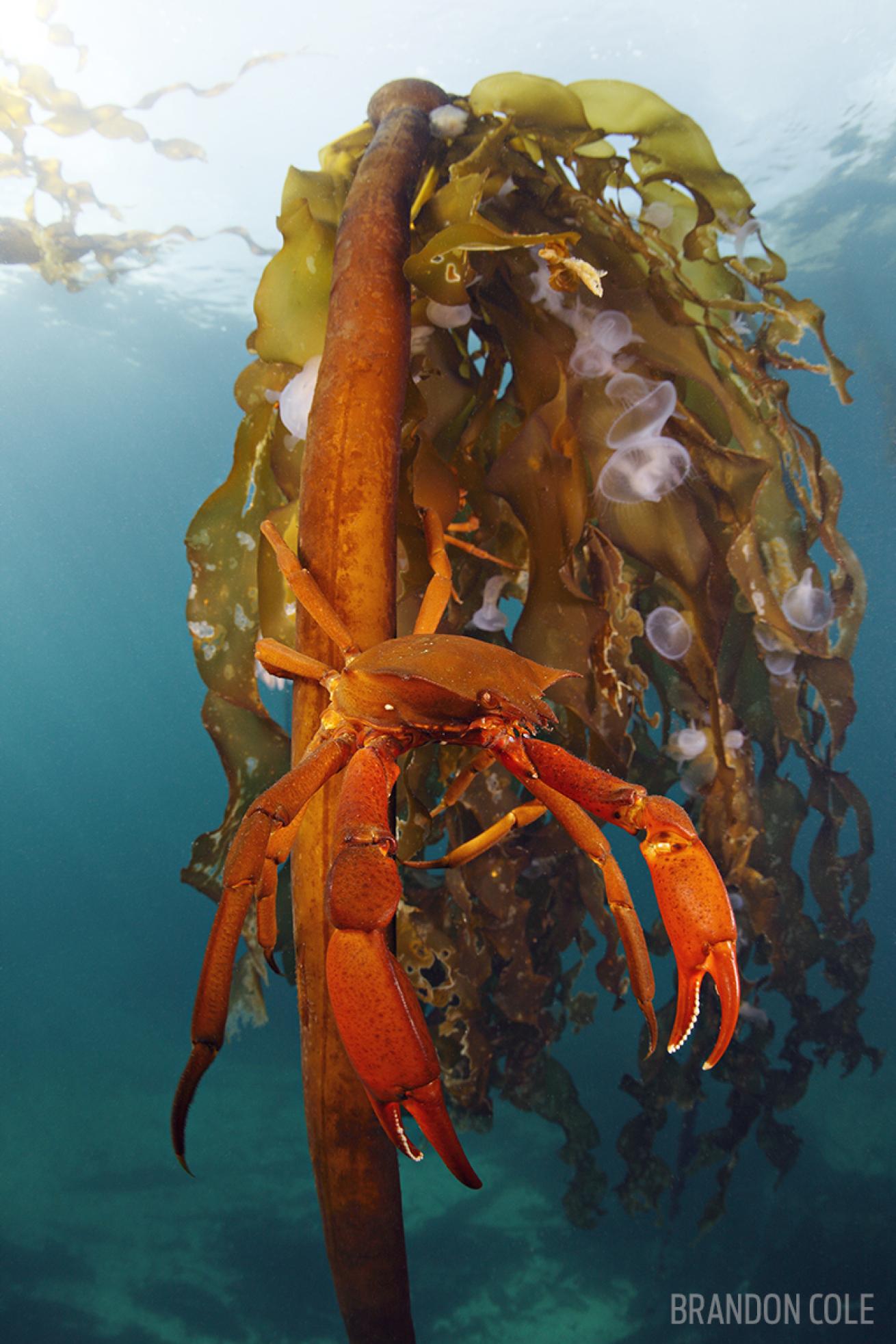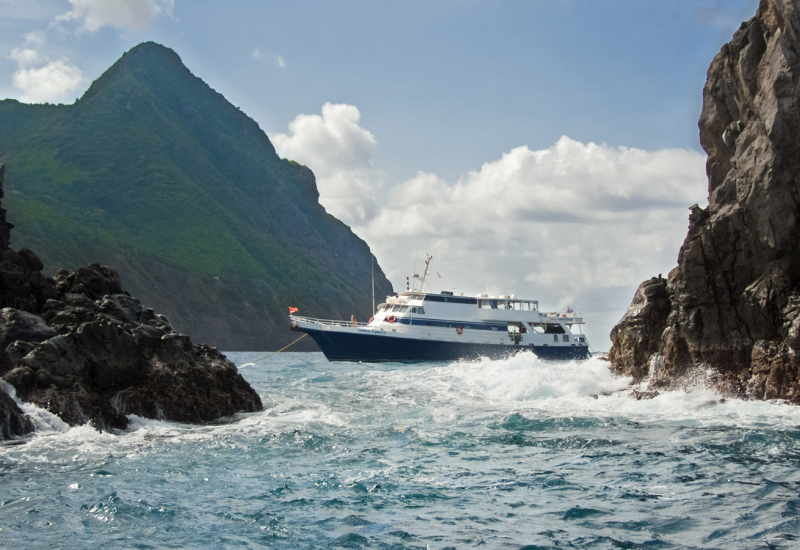5 Best Places For Macro Scuba Diving In North America - 2017 Readers Choice Awards
Our annual Top 100 Readers Choice Awards are based on your real-world dives, and they let us take that journey right along with you. Since 1994, we’ve been presenting our readers’ picks for the best diving in the world in our annual Top 100 Readers Choice Awards. It’s a feature that we love to put together, because we consider the results of our annual Top 100 survey a way for magazine readers, fans and online followers to share their most remarkable moments underwater. Below you'll find the winning destinations for Best Macro Diving in North America, and a magical glimpse at your next dive vacation.
How the Winners are Chosen:
Thousands of Scuba Diving subscribers and online users rated their experiences at dive destinations in a variety of categories on a scale from 1 to 5. Final scores are an average of the numerical scores awarded. A minimum number of responses was required for a destination to be included in these ratings.

Brandon ColeBritish Columbia took the #1 spot in our Top 100 Readers Choice Awards for the Best Macro Scuba Diving in North America.
1. British Columbia
Best Macro Diving in North America
It’s not growth hormones but gnarly currents washing plankton and algae blooms that account for the cartoonishly large life calling Vancouver Island home, including fields of 2-foot-tall plumose anemones and carpets of strawberry anemones in reds and pinks. From basket stars to dozens of nudibranch species, the invertebrate life proves abundant everywhere from Port Hardy on the island’s northern side, to the midsection that is Campbell River, to Barkley Sound and the Tahsis area on the west coast, plus Race Rocks Marine Protected Area southwest of the city of Victoria.
Dive Conditions
- Visibility: 50 to 100 feet
- Water Temperature: Once you reach depths of 30 feet, water temperatures are around 45 degrees Fahrenheit
- When To Go: fall and winter tend to have the greatest visibility because plankton blooms are common in the spring and summer which can impact visibility
- What To Wear: Drysuits are a must, especially for multi-day diving trips or long bottoms times
2. Florida
Best Macro Diving in North America
Florida has tons of scuba diving opportunities where you're likely to encounter some amazing marine life. When it comes to macro critters, you can't go wrong with Blue Heron Bridge in Riviera Beach. Just outside of West Palm Beach, Florida the Blue Heron Bridge is a favorite for underwater photographers and muck divers alike. Offering a macro menagerie for scuba divers willing to time the tides at this easily accessible shore dive.
Dive Conditions
- Visibility: 40 to 100 feet depending on what area you are in and the weather
- Water Temperature: Temperatures vary across the state but you can just about guarantee warm waters in the summertime, unless you are diving one of the many freshwater springs of Florida — which generally hold a consistent temperature of 72 degrees Fahrenheit
- When To Go: While water temps tend to drop in the winter, Florida offers amazing diving year round
- What To Wear: Anything from a simple dive skin to a 5mm depending on where and when you dive. In the winter a 5mm, 7mm or drysuit may also be appropriate
3. California
Best Macro Diving in North America
California has over 1,264 miles of coastline so there's plenty of places for marine life to hide. With many easily accessible shore dives and magnificent kelp forests scuba divers can spend countless hours searching for their favorite undersea critters.
Dive Conditions
- Visibility: Can range widely between 10 to 100 feet
- Water Temperature: Water Temperature: Ranges from high 40s to mid 70s depending on the season, with the central and northern coast seeing temps between 45 and 58 degrees Fahrenheit
- When To Go: California is relatively warm and sunny year-round with air temperatures generally between the 60s and 80s in Southern California, though in the winter Northern California drops into the lower 40s
- What To Wear: 7mm with hood and vest or a Drysuit
4. Washington
Best Macro Diving in North America
The emerald waters of the Pacific Northwest offer up a cold-water variation of your standard tropical set of macro critters. Look closely among the lettuce corals, red algae and giant plumose anemones and you'll find shrimp, nudibranch, stubby squid, crabs, sculpins and other marine life nestled about.
Dive Conditions
- Visibility: Averages around 15 feet most of the year but can reach up to 80-100 feet
- Water Temperature: 45 to 55 degrees Fahrenheit
- When To Go: From July through Sept. scuba divers have a good chance of spotting lion's mane jellies in the region
- What To Wear: A 7mm or semidry wetsuit can get the job done, but a drysuit is your best bet
5. Texas
Best Macro Diving in North America
We've all heard that "everything is bigger in Texas," but does that apply to their macro life? The Lone Star state offers a wealth micro critters, from the marine life of sites like the Flower Garden Banks to the freshwater variety living in the state's lakes and natural springs.
Dive Conditions
- Visibility: Varies widely throughout the state but 10 to 40 feet is common in the springs and lakes while 100 plus is possible in the Gulf
- Water Temperature: The Gulf can vary from the mid-60s to mid-80s depending on the season and the lakes can go form mid-80s to the 40s while the springs are a constant 72 degrees Fahrenheit
- When To Go: Summer tends to offer the best visibility and the calmest seas occur at the end of July through mid-September.
- What To Wear: Depending on where and when you dive anything from a simple dive skin to a 5mm will work form most divers










